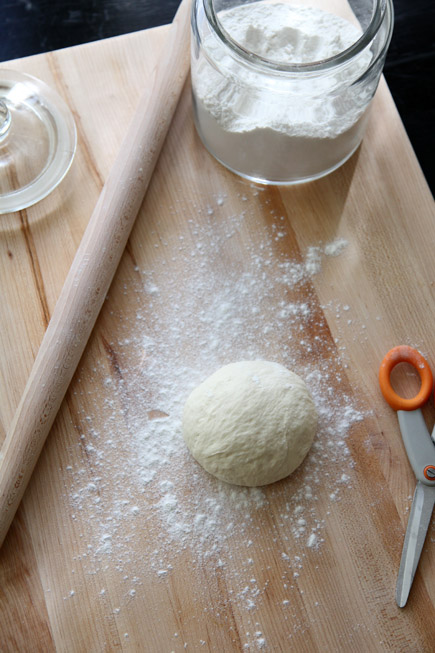Baking a Better Holiday: a Primer On Baking w/ Olive Oil – and Skipping Butter
A topic we find gets lots of interest: how to use extra virgin olive oil in baking, including how to substitute it for butter in a recipe. Olive oil is lower in saturated fat than butter. Plus, it adds a good, nuanced flavor. So we asked baking gurus for tips and suggestions on using olive oil as part of our Baking a Better Holiday focus this month. Below is a Q&A.

Photo courtesy of www.artisanbreadinfive.com
How can I substitute olive oil in a baking recipe that calls for butter, like a cake?
“Olive oil can replace butter and margarine in almost all baked goods,” says Sarah House, recipe specialist for Bob’s Red Mill Natural Foods, the Oregon provider of high-quality flours and other natural foods. “I use a 3:4 ratio – 3 parts olive oil is equal to 4 parts butter.”
In other words: If a baking recipe calls for a stick of butter (8 tablespoons), for example, use 6 tablespoons of olive oil. (Click here to see a conversion table.)
Are there times when I should avoid using extra virgin olive oil in a baking recipe that calls for butter?
Yes. “The only time olive oil is not an acceptable substitute for solid fats is in recipes that require a lot of creaming of the butter and sugar (super light and fluffy cakes), or when the fat needs to stay solid, as in a frosting,” House says.
Can I substitute extra virgin olive oil in a baking recipe that calls for a different oil, like canola or vegetable oils?

Why not! Extra virgin olive oil tastes better than “neutral oils” like canola and vegetable oil. “Any dessert that’s already made with some kind of vegetable oil is a candidate for trying,” award-winning cookbook author and dessert guruAlice Medrich says.
We’ve found you can substitute olive oil for other oils on a one-for-one basis. If a recipe, say, calls for half a cup of vegetable oil, use the same amount of extra virgin olive oil. We’ve done this with carrot and chocolate cakes.
Not if you want to improve the flavor of your baked good. Use a quality olive oil that tastes good. “Only use an olive oil that you enjoy eating on salads, as a bread dip etc.,” Matthew Kadey, a registered dietitian, recipe developer, and magazine writer whose work has appeared in EatingWell and Men’s Health, says. “If you don’t particularly like the taste of a highly processed olive oil, why sully your baking with it. As the old saw goes: ‘Never cook with a wine you wouldn’t want to drink.’”
What’s so bad about using any olive oil off the grocery shelf?
Ask House, of Bob’s Red Mill. She initially tried using an “inexpensive, off-the-shelf extra virgin olive oil” while developing a recipe for olive oil spelt cake with caramelized apples. (Click here to see the recipe for the cake.)
“Wow, was it obvious that I had used low-quality oil. The flavor of the oil overpowered the rest of the cake and left a noticeable aftertaste,” House explains. “When I baked the cake a second time using the California Olive Ranch extra virgin olive oil, the final product was so much better. There was a lighter, more fragrant olive oil flavor that melded nicely with the nuttiness of the spelt and the warmth of cinnamon and the texture was lighter, almost velvety.”
Bon appétit,
Your friends at California Olive Ranch
Follow us on Twitter: MemphisFoodGuy


No comments:
Post a Comment